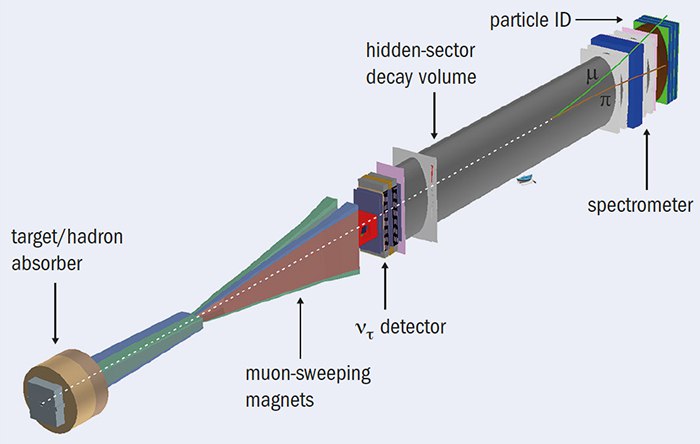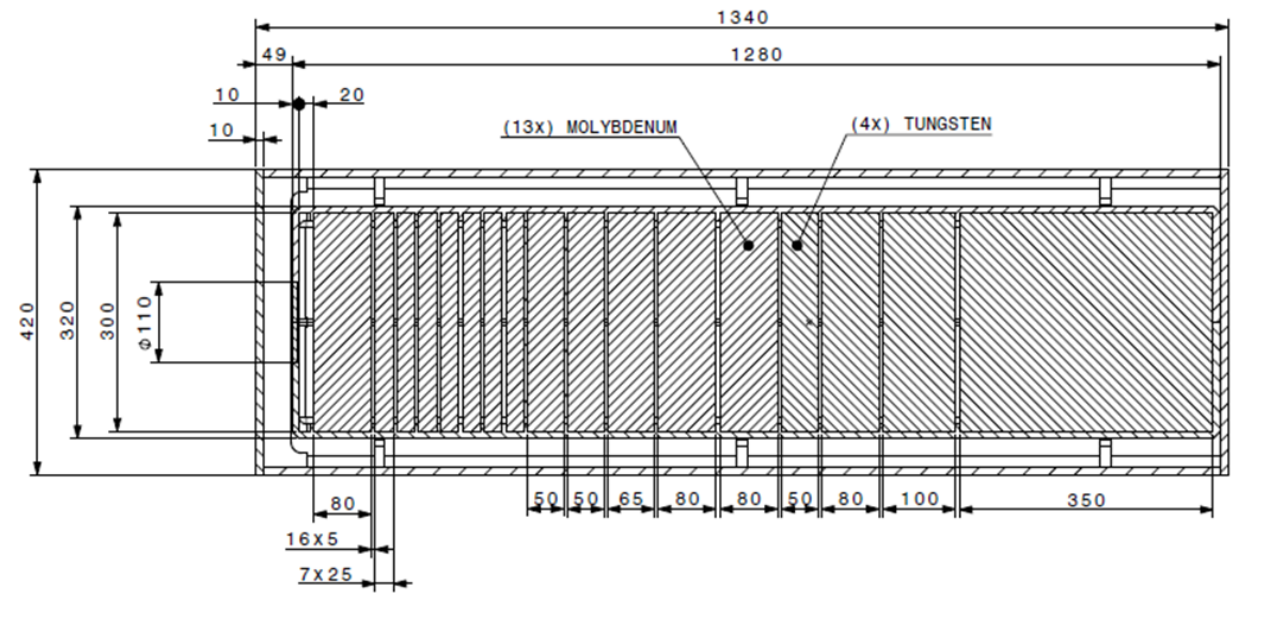NITU "MISiS", which is a direct participant in two experiments of CERN (SHiP and LHCb) and the only university in Russia that signed a cooperation agreement with the European Organization for Nuclear Research, together with the best Russian popular science portal N + 1, figured out how, why and who in CERN are looking for new physics.
Original material hereAfter the Large Hadron Collider reached its design capacity and the discovery of the Higgs boson in physics, a crisis ensued: the main theory of particle physics — the Standard Model — was completed, no significant deviations from its predictions were found, and no clear answer was given to the question of where to go . Scientists had to decide where to look for a new physics, a new, more general theory. At the same time, all the low-hanging fruits have long been torn off, any serious experiment would require huge investments, and who today will go to these expenses blindly, without the slightest hint of the possibility of success?
You can try to change the "front" and look for processes that do not require high energy, but occur very rarely. That is why the Russian physicist Andrei Golutvin, who has worked at CERN for many years, and his colleagues from the NUST MISiS, Yandex and other organizations, came up with an economical project to search in a new direction.
Andrey GolutvinIn the experiment SHiP will look for traces of unknown particles, including particles of dark matter, in a particle flow from the SPS accelerator filtered by magnetic fields, a five-meter layer of concrete and metal. Perhaps the enormous luminosity - a large number of particles being born - will make it possible to see new physics faster than high energies on high-power accelerators.
SHiP on SPS“At the LHC (Large Hadron Collider) they tried to find supersymmetry. No it is not visible. And we all know that we need candidates for dark matter. On the other hand, we know that the Standard Model is correct. Therefore, you want to add new particles so as not to spoil the Standard Model. The most minimal scenario is the so-called portal models. In them, new particles are described with the help of operators that are associated with an operator already present in the Standard Model through a very small constant, ”explains Andrei Golutvin.
Since neutrinos interact very weakly with other particles, for their detection it is required, first, to conduct many collisions, and second, to ensure a low level of noise. By using the SPS synchrotron for five years of proposed work, the experiment will be able to use about 2 × 10 ^ 20 protons, and a specially developed system of magnets will be used to reduce the noise.
“SHiP type experiments are called beam-dump experiments. In them you want to see something new and arrange a volume in which there is nothing. If you see something, it is a discovery. About 30-40 years ago, everyone was carried away by the Large Hadron Collider, and experiments of this type simply stopped doing. At this time, in particular, a very intense beam was developed at SPS. Well, we just realized that for relatively little money you can check if there are any such models, ”said Andrei Golutvin.
Target and Detector DesignA proton beam from the SPS synchrotron is planned to be sent to a fixed target, which will be about 120 centimeters thick. This is enough to stop all protons. When protons interact with the nuclei and electrons of the target, a large number of new particles will be created, among which, possibly, hypothetical particles of dark matter will also appear.
 General scheme of the SHiP experiment
General scheme of the SHiP experimentThe design complexity of the target lies in the fact that every seven seconds it must absorb about 3 × 10 ^ 13 protons, each of which has an energy of 400 gigV. This corresponds to an emitted power of the order of megawatts (up to 2.5 megawatts in peak). With a transverse target size of 30 centimeters, this means that several kilowatts of thermal energy must be removed from each square centimeter of it.
The solution to this problem was dealt with at NUST "MISiS". The target will consist of a set of metal layers with a thickness of 2.5 to 35 centimeters. Half of the layers will be made of a less dense molybdenum TZM alloy, and the rest of the target is made of tungsten.
 Dmitry Karpenkov
Dmitry Karpenkov“A mockup of this target has been made. It is two times less than you need. This is a prototype. But the plate thickness in it is already extinct, because here the main parameter is the interaction length, because we need to know exactly at what depth what particles are born, ”says Dmitry Karpenkov, senior researcher at NITU“ MISiS ”. This prototype is currently being tested at the SPS synchrotron with reduced proton flux. The purpose of these tests is to better understand which already known particles are born in the process of interaction in order to improve the detector's protection against them.
The plates will be cooled by streams of water passing through the narrow gaps between them. It is estimated that this will require about 50 liters of water per second, or 180 tons per hour. To further increase the boiling point of water to 200 degrees Celsius, it will be supplied under a pressure of 15 atmospheres.
“The target has a relatively simple structure. This is essentially just a set of thin metal cylinders. At the beginning of the target, thinner ones are used, since here the greatest heat release and it is required to remove heat faster. These cylinders are made of molybdenum, the density of which is two times lower than that of tungsten. If we used tungsten here, it would simply melt, ”continues Karpenkov.
 The scheme of the target, indicating the thickness of all layers, side view
The scheme of the target, indicating the thickness of all layers, side viewThe main difficulty of the experiment will be the creation of conditions with the lowest possible background noise. In the process of interaction of the proton flux with the target, showers of energetic particles will be formed. Most of them will stop five meters of concrete. But at the exit from it, muons and neutrinos still interacting weakly with matter.
The main problem is muons. Fortunately, these are charged particles that can be rejected by magnets. The difficulty lies in the fact that muons can have very different energies, and those that move relatively slowly can make a full turn in a magnetic field and return to the detector. To reduce the number of such particles and at the same time get along with a relatively small number of magnets, a special scheme of their arrangement was developed at NITU “MISiS” with the participation of the Yandex Data Analysis School.
According to Fedor Ratnikov, a researcher from Yandex, the task that they had to solve turned out to be very difficult: “As a result of the optimization, I would say, a very unexpected form of configuration and arrangement of magnets. We optimized the reduction of the background from muons to the desired level, while minimizing the mass of the magnets. "
 Appearance of the target design
Appearance of the target designThe use of neural networks to solve these problems was explained by the Yandex-CERN project manager Andrei Ustyuzhanin: “To find the optimal scheme, we used machine learning methods. However, the standard methods turned out to be inapplicable in this case, so they had to be significantly modified. ”
“Unlike neural network training, which uses a prediction error gradient that allows you to smoothly arrive at the optimal configuration, you cannot do this here. Therefore, we have to rely on optimization methods that do not rely on gradients, for example, on Bayesian optimization. We expanded this approach by assigning more weight to those muons that make a large contribution to the prediction error. This approach has significantly reduced the time to search for the optimal solution, ”explains Andrei Ustyuzhanin.
After the magnetic system, a long 50-meter tunnel with dimensions of 5 × 10 meters in cross section is provided for in the experimental setup project. There will be a hypothetical decay of heavy neutrinos into other particles.
 Magnet Configuration
Magnet Configuration“From all the particles [the beam] will not be able to release, because there are ordinary neutrinos. They still somehow interact with matter, so the first thing to do is remove the air so that ordinary neutrinos do not interact with this air. That is, this complex engineering structure will be in a vacuum, ”explains Andrei Golutvin.
At the end of the tunnel, the detectors themselves will be located, aimed at detecting the decay products of hypothetical dark matter particles. It is assumed that some of them will decay in the tunnel into a pair of known particles, for example, muon and pion, which will be registered.
 Diagram of the coupling force of heavy neutrinos on their mass. Green indicates the experimentally obtained at the moment restrictions from the bottom. Blue - the expected sensitivity of the SHiP experiment. The gray area is forbidden theoretically.
Diagram of the coupling force of heavy neutrinos on their mass. Green indicates the experimentally obtained at the moment restrictions from the bottom. Blue - the expected sensitivity of the SHiP experiment. The gray area is forbidden theoretically.The authors of the experiment expect that all the measures taken will increase the sensitivity of the detector thousands of times compared to what has been achieved at other installations. This means that in five years of work, several thousand of the desired particles will be registered at best, but it is more likely that we will be talking about just a few events.
In the case, if during the time of observation unknown particles are not found, then this will allow narrowing the ranges of further searches. And besides, at the same detector studies will be conducted so far poorly studied tau neutrinos. These data will certainly help to better understand the physics of neutrinos and, perhaps, will lead scientists to new ideas on where to look for New Physics in the future.